Yeah, today discussing food again~ XD Today, I'm going to list down some famous Korean treats & street food that Korean eat during winter.
As you know Korea has distinct four seasons, there are different from Malaysia. In Korea, there are certain things you can do during the winter season only. Although, street food may be available all year, but there are some snacks that emerge only during the colder months. Snacks such as baked sweet potatoes, hoppang (steamed bun), bungeoppang (fish-shaped pastry filled with sweet red bean paste), and more are some of Korea’s favorite winter snacks enjoyed by all regardless of age. A major event that proceeds the winter season is making kimchi (gimjang). Let's check it out ~
Street Food
1.Bungeoppang 붕어빵
(fish-shaped pastry filled with sweet red bean paste)
The bungeoppang, also known as hwanggeum Ingeoppang (golden fish shaped bun), is made of wheat flour and glutinous rice flour dough filled with red bean paste. Bungeoppang is chewier than hoppang because of the glutinous rice flour. The bungeoppang bakers can be seen all over the streets of Seoul baking. Bungeoppang usually costs about ₩2,000 for five of them.
Also, a fun character analysis can be applied, depending on the way you eat your bungeoppang. Of course, it is only for fun, but let’s try to diagnose your character depending on whether you eat your bungeoppang head first, or tail first.
Here's the way to test:
Eats head first: An easy-going optimist, unconcerned with trivial things. Says whatever comes to mind, is passionate, but the passion can dwindle easily.
Eats tail first: Cautious. A romanticist concerned with the smallest things; is slow in catching onto other’s feelings.
Eats stomach first: Masculine, active, bright, and outgoing.
Eats fins first: Temperamental and childish. A loner.
Cuts it in half and eats the tail first: Polite, good at saving money, and a rationalist.
Cuts it in half and eats the head first: Strong willed who goes through with a plan once it is decided. Stingy, and does not like to lend money.
The making
Ready to eat.
2. Hoppang 호빵
(steamed bun)
Although there is no historical reason as to why hoppang is a favorite winter snack, it rarely appears among street fare during other seasons. Hoppang is made of wheat flour dough filled with red bean paste, and other types of fillings including vegetable, pizza, curry, and more. Hoppang usually costs about ₩500 ~ ₩700, you’ll see people making hoppang along the streets or in convenience store or small supermarkets.
3. Baked Sweet Potatoes and Roasted Chestnuts
Chestnuts are autumn nuts, and sweet potatoes are ripe for gathering in November. Thus, late fall begins the roasted chestnuts and baked sweet potatoes season. Baked sweet potatoes are usually baked over a hot fire in a large iron barrel. Although prices vary depending on the size, they generally cost about ₩2,000 for 3 baked sweet potatoes.
Baked sweet potatoes are sweeter than steamed sweet potatoes, and are best to eat when they are hot. Roasted chestnuts are actually broiled and they take a long time to cook thoroughly. Thoroughly cooked chestnuts are not only tastier, but are easier to peel and eat. They are usually sold in small paper bags, and cost about ₩2,000 ~ ₩3,000. However, prices may vary depending on the size of the bag or the amount of chestnuts. Baked sweet potatoes and roasted chestnuts are usually found near resident houses, subway stations, or schools. Many young college students sell these snacks in the wintertime as a side job.
Baked Sweet Potatoes
Roasted chestnuts
4. Topokki 떡볶이
(spicy Korean rice cakes)
Topokki is one of the most famous dishes in Korea. It has a very distinctive spicy, yet sweet flavor. Though garaetteok (long, white rice cakes) is traditionally served on New Year’s Day, it can be enjoyed year round in tteokbokki. In this famous dish, tteok (rice cake) is mixed with eomuk (fish cake), boiled fish paste and various fried items, and then is marinated with red pepper paste. The entire concoction is mixed together as it’s heated and served with a hot cup of broth (the water the eomuk was boiled in). Though it’s definitely a snack (or a light meal!) that you’ll find throughout the four seasons, the popularity of topokki skyrockets in the winter since it warms the body, fills the stomach, and seems to fight off the winter blues. Since it’s a dish that is enjoyed by people of all ages, you’ll find tteokbokki vendors on many busy street corners in Seoul, and especially in the Myeongdong and Jongno areas. The dish usually ranges from 2,500 to 3,000 won per serving with complimentary refills of eomuk broth.
5.Eomuk 어묵
(boiled fish paste) Skewers
As the cold winter winds and freezing weather settle in, Koreans begin to crave delicious eomuk skewers. Broad and flat eomuk is prepared on skewers, then boiled in water flavored with radishes and kelp. This creates a richly flavoured broth, which can be drunk while eating the skewers. The eomuk is not spicy at all, so everyone, including young children and foreigners, can enjoy it. It’s good to eat Eomuk with tteokbokki (spicy Korean rice cakes) as it perfectly compliment’s the tteokbokki’s spicy taste. A tip for eating great eomuk: select an eomuk skewer that has been brewing in the broth for a long time and dip it in the soy sauce marinade. These days, as well as the regular eomuk skewers, red-colored eomuk is becoming popular. It is marinated in red pepper paste and boiled in only a small amount of broth, so it has a distinctive spicy flavour.
An eomuk skewer will usually cost anywhere from 500 won to 700 won, and they are sold on almost every street during the winter.
Before the cook
After the cook :]
6. Hotteok 호 떡
(Korean-style sugar pancake)
Hotteok is a simple and sweet snack. During the winter, places such as Insa-dong are dotted with Hotteok vendors serving up these delicious little pancakes. Hotteok is made with dough from glutinous (sticky) rice flour and filled with a spread made from sugar, peanuts, and cinnamon. The round pancake is then lightly fried in oil. Be careful when you take that first bite! The hot brown-sugar filling is often very hot and can scorch your lips if you’re not careful. Like many of the other street foods in Korea, Hotteok is a steal at only 700 to 1,000 won.
Korean Treats
1. Gimjang 김장
Kimchi
Kimchi is the quintessential Korean food, and comes in numerous varieties. Wintertime Kimchi-making is known as ‘gimjang,’ a time during which households (typically housewives) in Korea prepare and store kimchi in massive quantities for the winter months. Several decades ago, the kimchi made during gimjang was the only vegetable available in the winter; if you didn’t make your kimchi during the ‘gimjang’ period, you would have to go without vegetables until the following spring. Each year, the fall’s final harvest includes the major ingredients for kimchi – Chinese cabbages and radishes. Thanks to modern farming techniques, vegetables are now available throughout the year; however, this annual tradition of pre-winter kimchi-making remains strong.
An important part of gimjang is the storing of the final product. To allow for proper fermentation, gimjang kimchi is best kept near 0℃ with minimal temperature fluctuation. In the past, special holes were dug in which kimchi jars were covered buried and covered with straw mats to ferment during the winter. Today, most Korean households have two refrigerators. One is just your average refrigerator while the other is a uniquely Korean appliance used exclusively for kimchi storage.
An important part of gimjang is the storing of the final product. To allow for proper fermentation, gimjang kimchi is best kept near 0℃ with minimal temperature fluctuation. In the past, special holes were dug in which kimchi jars were covered buried and covered with straw mats to ferment during the winter. Today, most Korean households have two refrigerators. One is just your average refrigerator while the other is a uniquely Korean appliance used exclusively for kimchi storage.
Preparation
Start to eat
2. Red Bean Porridge PatJuk / 팥죽 of Winter Solstice Dongji /동지
The winter solstice is the shortest day of the year and has the most hours of darkness. After the winter solstice, typically on or around Dec 22, the days gradually become longer, slowly chasing away winter as the sun regains its strength.
A traditional Korean winter solstice event is making and eating red bean paste porridge (called ‘patjuk’ in Korean). Red beans are boiled and small balls of glutinous rice are added, making a thick and sweet porridge. Red beans symbolize the chasing away of evil spirits, and the rice balls symbolize new life. Therefore, eating a delicious bowl of patjuk on winter solstice was believed to chase away all illnesses. Also eating the same number of rice balls as one’s age symbolizes the successfully passing of the year.
In the olden days, Koreans would sprinkling red bean paste porridge around the yard and share the dish with neighbors to chase away evil spirits. At the time, many also believed that a warm winter solstice meant the coming of disease and death while a cold, snowy winter solstice meant a prosperous New Year.
Although the winter solstice is not a major Korean holiday like Chuseok or Lunar New Year’s Day, Korean families do get together to enjoy a sweet bowl of red bean paste porridge and wish each other a healthy and prosperous New Year. These days, numerous porridge restaurants offer patjuk anytime of the year. A bowl usually costs 5,000 to 8,000 won.
A traditional Korean winter solstice event is making and eating red bean paste porridge (called ‘patjuk’ in Korean). Red beans are boiled and small balls of glutinous rice are added, making a thick and sweet porridge. Red beans symbolize the chasing away of evil spirits, and the rice balls symbolize new life. Therefore, eating a delicious bowl of patjuk on winter solstice was believed to chase away all illnesses. Also eating the same number of rice balls as one’s age symbolizes the successfully passing of the year.
In the olden days, Koreans would sprinkling red bean paste porridge around the yard and share the dish with neighbors to chase away evil spirits. At the time, many also believed that a warm winter solstice meant the coming of disease and death while a cold, snowy winter solstice meant a prosperous New Year.
Although the winter solstice is not a major Korean holiday like Chuseok or Lunar New Year’s Day, Korean families do get together to enjoy a sweet bowl of red bean paste porridge and wish each other a healthy and prosperous New Year. These days, numerous porridge restaurants offer patjuk anytime of the year. A bowl usually costs 5,000 to 8,000 won.
3. Manduguk 만두국
(dumpling soup)
Manduguk (dumpling soup) is a delicacy that warms the body and mind, and is enjoyed by almost all Koreans during the cold winter. Beautifully prepared dumplings are filled with minced beef and vegetables, then added to a hot broth along with sliced rice cakes and boiled to perfection. This is traditionally served on New Year’s Day. These days, pheasant meat, as well as pork and beef, is also added to the dumplings to make Pheasant Manduguk. This pink and yellowish dumpling soup is made with natural vegetables. Although eaten throughout all the four seasons, Manduguk is especially delicious in winter and is even tastier when enjoyed with gimjang kimchi (kimchi prepared during winter) or cold mulkimchi (watery kimchi). Manduguk usually costs about 4,000 won to 6,000 won per bowl depending on the region and the restaurant.
Before boil in soup
Ready to serve
That's all for today~ Keep searching if you want to know more. 고마워
source: http://www.visitkorea.or.kr/enu/SI/SI_EN_3_6.jsp?cid=675151
http://english.visitkorea.or.kr/enu/SI/SI_EN_3_6.jsp?cid=916141
by JY
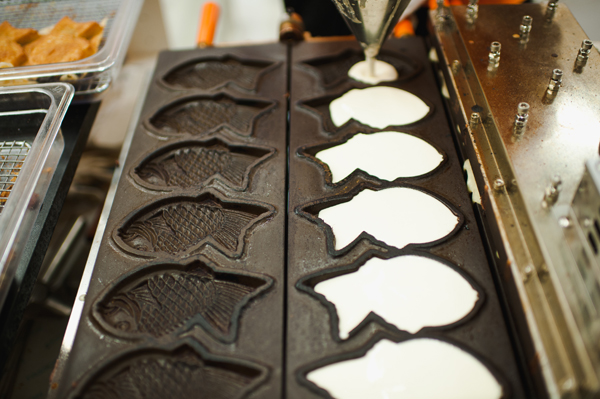
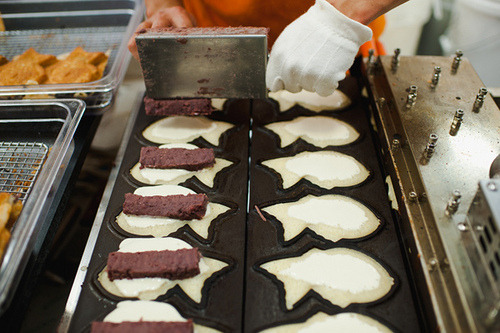
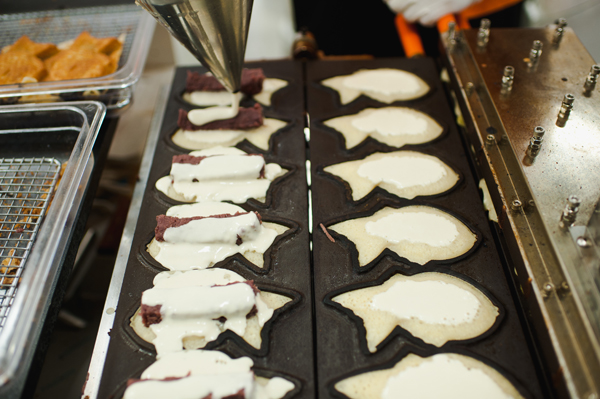

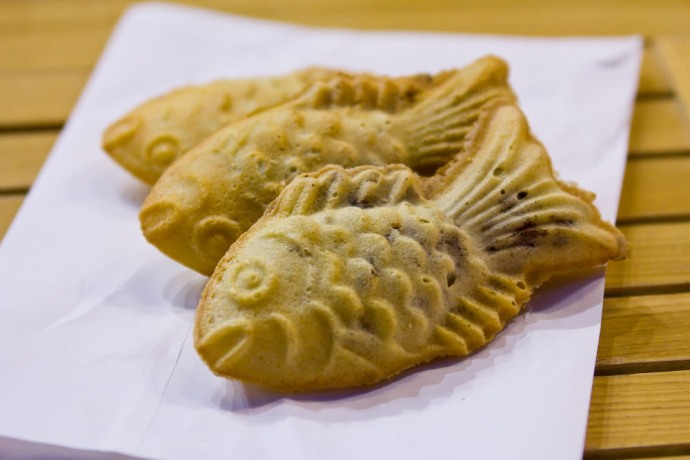


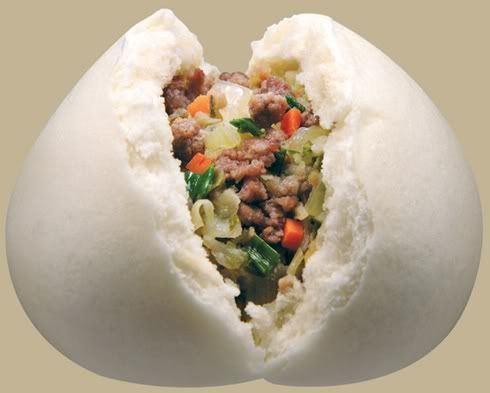

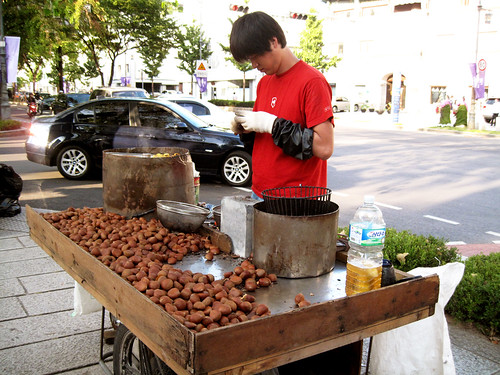


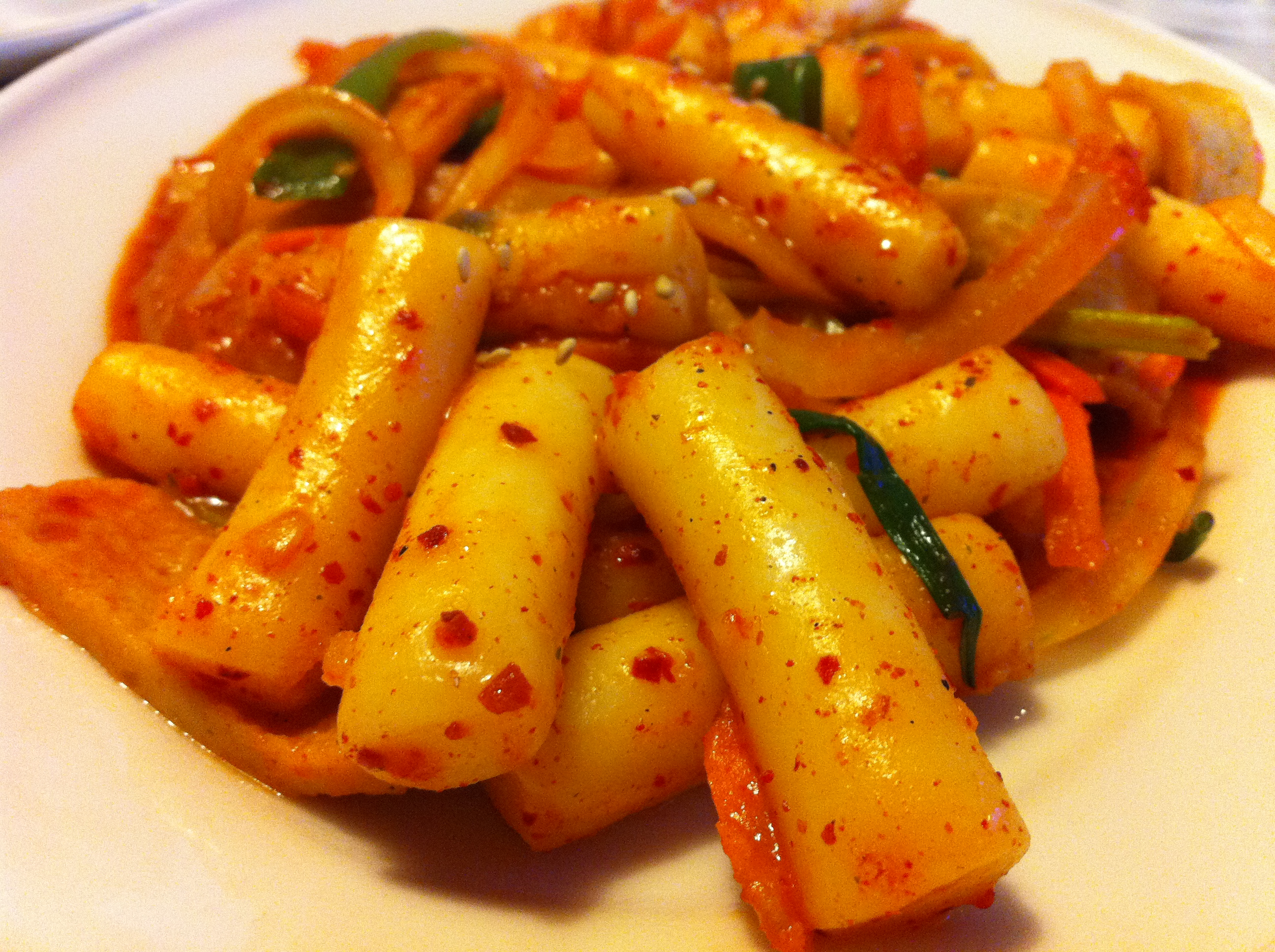


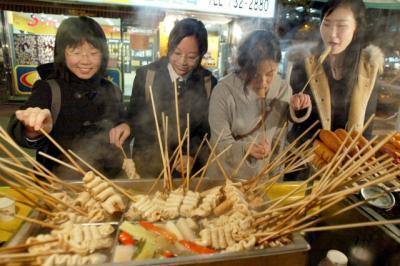
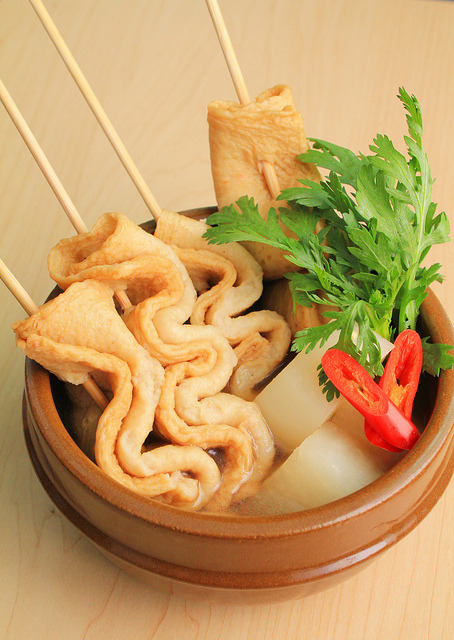


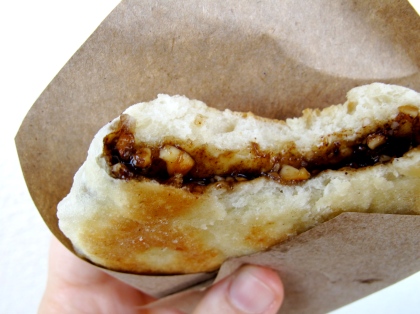
.jpg)




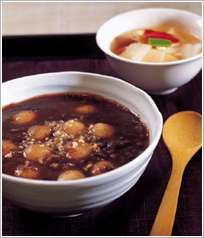


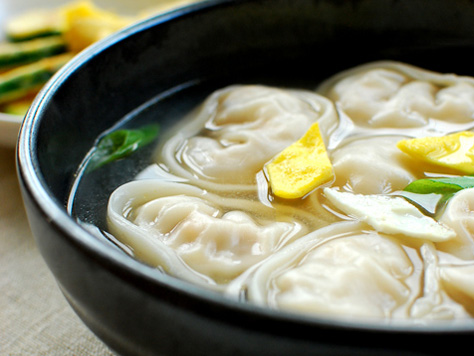

No comments:
Post a Comment